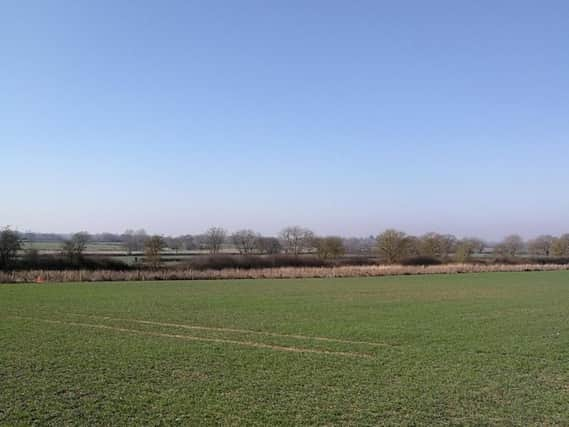The four major developments that will alter the Aylesbury Vale landscape over the next decade


Over the next 12 years North Bucks is set to undergo changes that will completely change the landscape of the region, but a huge question mark remains over whether the people affected have had their voices heard or represented.
Construction work for phase one of HS2, running from London to the West Midlands is just getting underway and will continue until 2026, tearing through the heart of the Aylesbury Vale countryside from Waddesdon to Brackley in the process.
Advertisement
Advertisement
The whole project is now estimated to cost £55.7 billion, almost double the original estimate, and one point of contact with the environmental harm posed are the 108 ancient woods threatened with loss or damage, according to the Woodland Trust.


Also due to begin construction before the year is out is the western phase two section of the East-West rail link between Cambridge and Oxford.
Running past Twyford, Steeple Claydon and Winslow, construction will be causing major disruptions throughout the region until 2023, with the whole project expected to cost around half a billion pounds.
Next on the menu for the North Buckinghamshire countryside is the Oxford-Cambridge Expressway. This 80 mile road is currently in the design and consultation phase, with only a broad corridor (Corridor B) having been decided upon (see map). The precise route will not be announced until the autumn of 2020.
Advertisement
Advertisement
However the £3.5 billion project has already collided with wildlife campaigners due to its approach to environmental concerns.


In response to the corridor decision, Estelle Bailey, Chief Executive of the Berks, Bucks and Oxon Wildlife Trust, said in a press release statement:
“In our opinion Corridor B is the worst of the three options. We told Highways England that the potential impact on biodiversity of Corridor B is so serious that the route should have been discounted entirely. The only way to avoid exceptionally serious impacts on biodiversity would be to develop a road route that is so convoluted that it would fail to qualify as an expressway.”
On their website The National Infrastructure Commission, who provide expert, impartial advice to the Government on infrastructure, write:
Advertisement
Advertisement
“...the Commission identifies opportunities to create well-designed, well-connected new communities and deliver one million new homes and jobs in the area by 2050, while respecting the natural environment and without making changes to existing Green Belt protections. Doing so would help create vibrant new towns, including the first new towns in the UK for 50 years.
“Central to achieving this vision are completion of the new East-West Rail line connecting Oxford and Cambridge by 2030 and accelerating the development and construction of the Oxford-Cambridge Expressway.”
Apparently adherring to this advice, in his November 2017 budget, Chancellor Phillip Hammond committed to building a million more homes between Oxford and Cambridge by 2050, 100,000 of them by 2031.
In October 2018, the Campaign to Protect Rural England calculated that the equivalent of 27,000 hectares of greenfield farmland and woodland could be lost.
Advertisement
Advertisement
Paul Miner, Head of Strategic Plans and Devolution at the Campaign to Protect Rural England, writes on their website:
‘If given the green light, this development will change the face of England’s countryside forever. Yet no formal assessment of the environmental impact it will have has taken place. Whilst there will be a need for genuine affordable housing to meet local need in the area, the scale of these proposals is completely unacceptable.”
As this and the graphics demonstrate, there is an unprecedented amount of development planned through one small area of the country over the next decade, with many of the construction timelines set to overlap.
All of this is taking place amidst a backdrop of three MPs for the region whom it could be said are restricted in their abilities to represent their constituents due to their current positions.
Advertisement
Advertisement
The MP for Buckingham is John Bercow, who in his role as Speaker of the House is both unopposed in elections while also being unable to vote in the House of Commons.
The MP for Aylesbury, David Lidington, is the de facto deputy Prime Minister and member of the Cabinet, meaning that by the convention of collective responsibility he is unable to oppose Government decisions even if he wanted to.
This is highlighted never more so than by the voting record of the MP for our adjacent constituency of South Northamptonshire, Andrea Leadsom. Although she has made no secret of her oppostion to HS2, she has been absent from key votes ever since taking up Cabinet positions and most recently as Leader of the House.
We want to know your views. This is your campaign. Do you stand to be affected by any or all of these major developments? Email: [email protected]